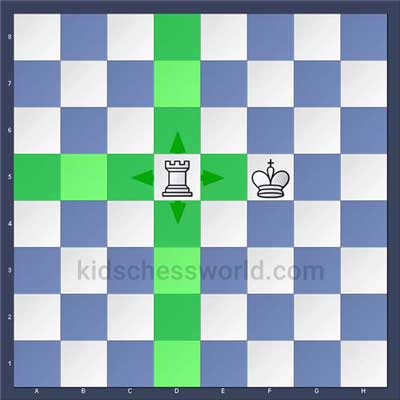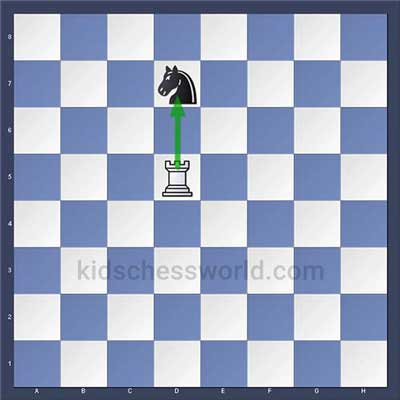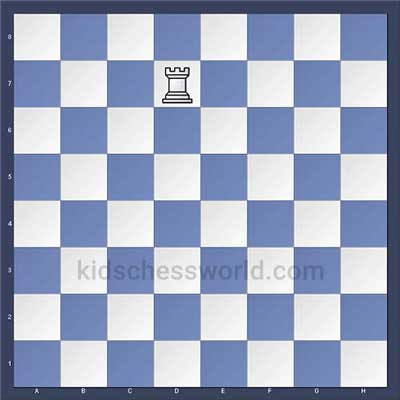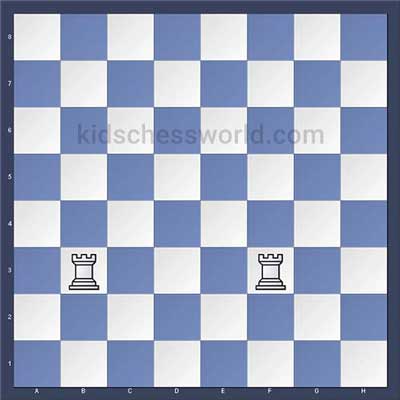Rook
01 Apr 2015The word Rook came from a Sanskrit word called Rath which means a chariot. In ancient times, Rook was called an ‘Elephant‘. That explains why the Rook moves horizontally and vertically but not diagonally! Have you seen an Elephant walking diagonally?!
Name: Rook ♖
Points: 5
Rook can move to any number of squares in horizontal and vertical directions. Rook can go to all the squares marked in green. Rook will be blocked by pieces of its own side. Here the Rook is blocked by the King on f5 square.
Rook can capture an enemy piece standing on it’s way. Here the Rook can capture the Knight on d7 and after capturing, it occupies the d7 square.
After capturing the Knight:
‘Doubled Rooks‘ are more powerful than a Queen. This is because they support each other and they do more damage than any other combination. You should always try to double your Rooks according to the situation.
Doubled Rooks:
Rook is involved in a special move called ‘Castling’. You will learn about it in a later section.
What do you prefer? Two Rooks or a Queen. Let us know in the comment section.




